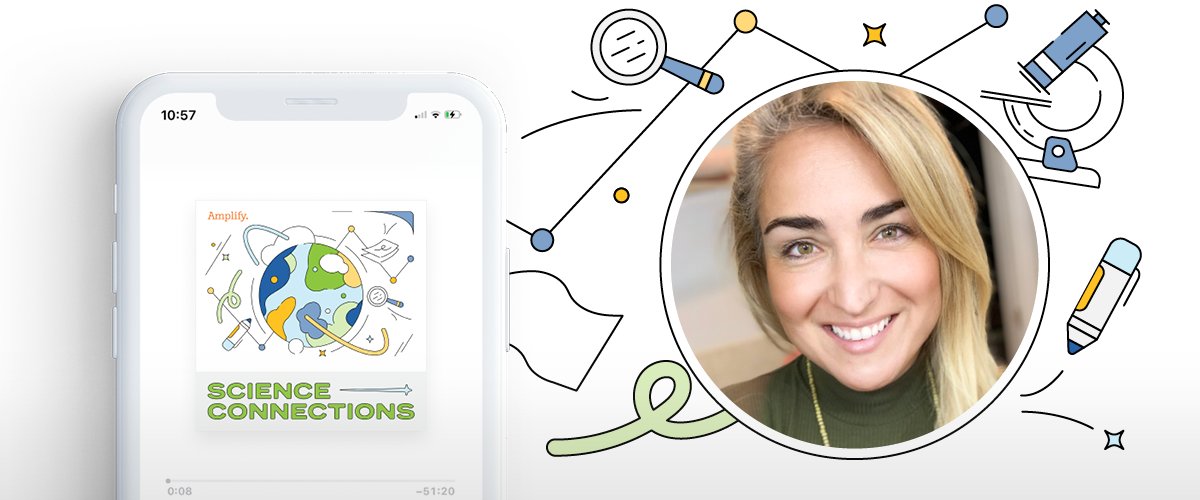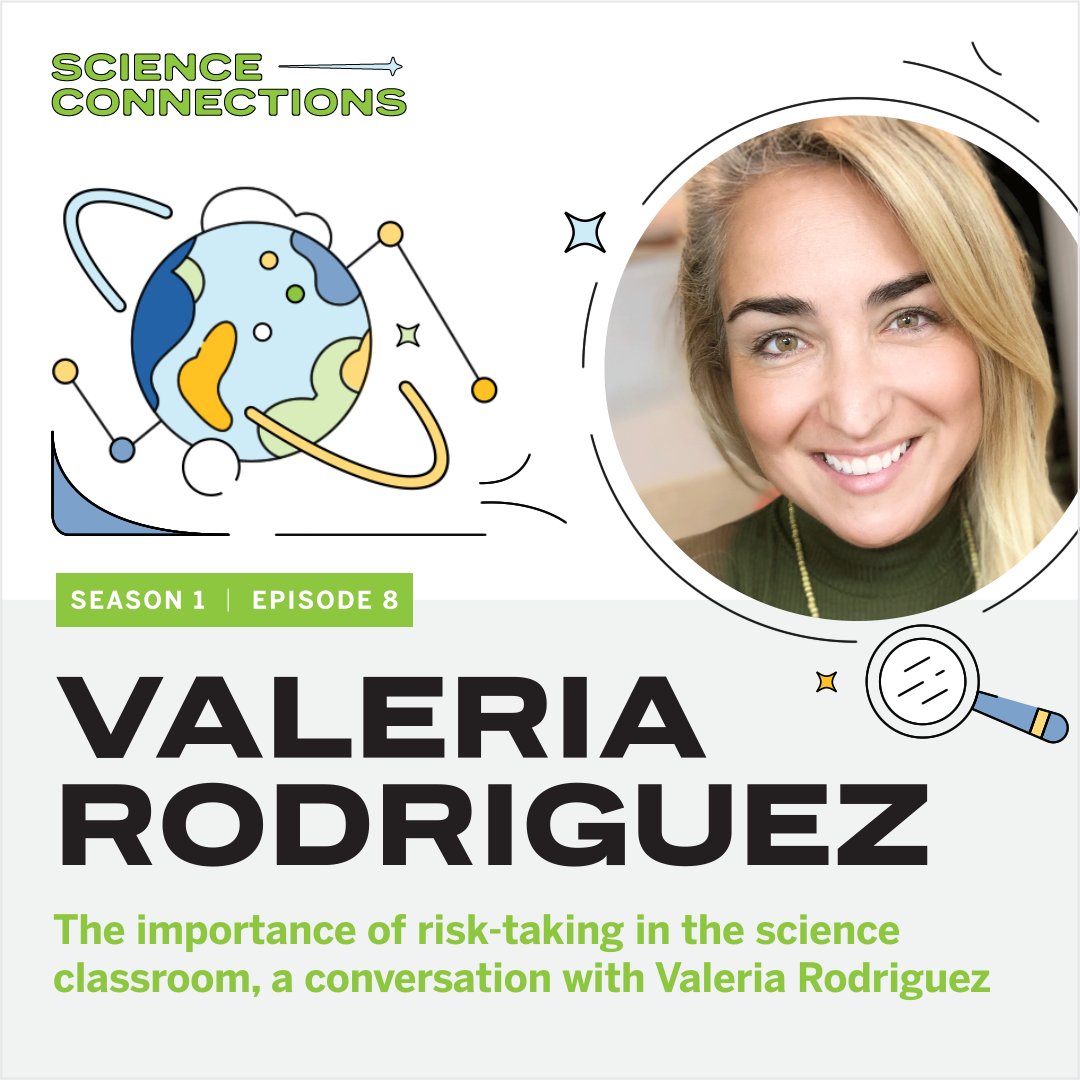
Hear from science educator Valeria Rodriguez on our Science Connections podcast
In this episode of Science Connections: The Podcast, host Eric Cross sits down with Valeria Rodriguez, a Miami-based science educator, instructional technologist, and illustrator.
During the episode, Rodriguez describes how she uses real-world projects to make lessons more meaningful, and why teaching students to sketchnote—a way of creating visual summaries of ideas—helps them take risks they can learn from and increases their conceptual understanding in science.
Read on for a peek at the episode, where you’ll learn more about the role of creativity in science and the importance of risk-taking in the classroom.
Risk aversion among students today
Valeria is a science educator, instructional technologist, and illustrator (not to mention former college athlete and Peace Corps member). She also combines her science and art expertise to work as a graphic facilitator, which is her role on a STEAM team teaching third through fifth graders in Miami, FL.
One thing Valeria has noticed in her classrooms is that her students often seem wary of taking risks and getting things wrong. How does she try to challenge and change this? Art.
Valeria works with her students to use drawing as a form of note-taking. In the process, she says, “I mess up all the time. I scratch things out because my students in general are risk-averse. They don’t want to make mistakes. And drawing is one of those things that taught me that it’s okay to make mistakes.”
Eric Cross says he sees the same risk aversion with his 7th graders. “When I ask them to give me a hypothesis about a phenomenon that I’m going to teach, I say, ‘It’s okay to be wrong’—but I see them drift to the Chromebook and want to Google it.”
Creativity in science versus “getting it right”
Sometimes risks lead to mistakes. But mistakes are not dead ends, these educators say. Mistakes are opportunities. They present opportunities not only for academic learning, but also for personal growth.
Of course, taking a risk may still deliver an expected or intended result. But even when it doesn’t, that result can be valuable.
Eric describes an activity where his students walk around the school campus swabbing various items to see what would grow in Petri dishes. “Some things grew and some things didn’t. Some of the experiments didn’t yield the cool results,” he says.
But that is exactly what gave the class the chance to speculate and learn about what factors—temperature, a pathogen, the swabbing technique—might have prevented growth.
Risk-taking also supports students’ personal growth, often in ways that prepare them to learn even more.
For one thing, taking risks helps students practice tolerating uncertainty.
“Sometimes my kids are frustrated because I don’t have yes or no answers,” says Valeria, citing the example of an activity with a weather balloon. “We don’t know how high it’s gonna go. Is the GPS tracker gonna work? We don’t know, but we have to do all the steps and find out. I have to say, ‘It’s okay to be frustrated.’”
Taking risks can also lead to results that are less measurable, but equally valuable. When she does art and sketchnoting with her students, “Some people will say they ‘messed up’ the drawing,” Valeria says. “But you know what? They gave it character.”
How teachers can model risk-taking
“Part of our job is also taking risks,” says Valeria, describing the time her class wound up having to do a tethered weather balloon launch because they couldn’t get approval in time to launch the balloon in their location near an airport.
“A parent said, ‘Oh, you’re not releasing the balloon,’” she recalls. “I was like, ‘Well, this is a lot of work, too, and I went back to my class and I was like, “You know what? I took a risk to do this project. I could have played it safe with a handout of a weather balloon,” she laughs, “or, you know, a YouTube video. But we are continuing to push.”
She adds: “I want to thank the teachers who keep trying to do the hard things that aren’t tried and tested.”
Eric agrees. “There aren’t a lot of opportunities for students to see adults in positions of authority or that they respect or admire model failure,” he says.
Teachers can model risk-taking and “failure” outside of what they’re teaching—by just being who they are. “I cycle and I have scars everywhere. The image in my head is ‘I’m a cyclist,’ not ‘I’m banged up,’” she says. “They give me character and I keep riding.”
Listen to the whole podcast episode here and subscribe to Science Connections: The Podcast here.
About Amplify’s Science Connections: The Podcast
Science is changing before our eyes, now more than ever. So how do we help kids figure that out? How are we preparing students to be the next generation of 21st-century scientists?
Join host Eric Cross as he sits down with educators, scientists, and knowledge experts to discuss how we can best support students in science classrooms. Listen to hear how you can inspire kids across the country to love learning science, and bring that magic into your classroom for your students.



